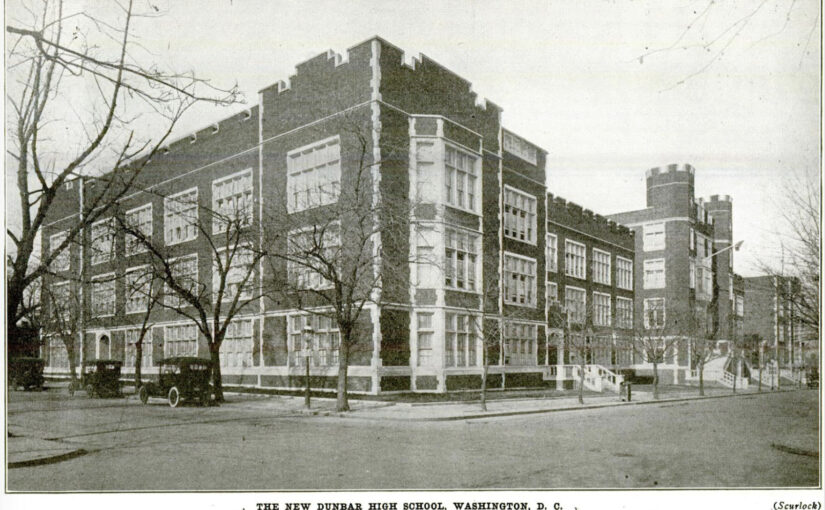This year for Black History Month we’ll review chapter by chapter Alison Stewart’s First Class: The Legacy of Dunbar, America’s First Black Public High School. This is more Truxton Circle related then this blog’s previous annual looks at Shaw resident and founder of Negro History Week (later Black history month) Dr. Carter G. Woodson’s Mis-Education of the Negro. As Dunbar High School is located in Truxton Circle currently taking up all of Square 554.

Yes the above photo is of Armstrong students, but they are on the Dunbar campus. Chapter 9 is about Dunbar students who went to serve and have careers in the US military. I will focus on what happened at Dunbar.
Dunbar had the Dunbar High School Cadet Corps, referred to as the Corps in the chapter. Armstrong had a Corps too, but the book isn’t about them. It appears the Corps formed in the 1940s, probably a response to America’s involvement in World War II.
We learn about the importance of the Corps through Wesley Brown. Brown was the son of a truck driver and a laundress, and he himself had a job in a mailroom. He juggled school work and work work. Brown credited the high expectations he was held to at Dunbar and the discipline drilling gave him a leg up over other cadets at the Naval Academy in Annapolis. And it was at Annapolis he met and befriended Jimmy Carter.
But back to Dunbar. “The cadets were a part of everyday life at Dunbar.” They marched everywhere. Inside the building, as there was a large space on the 1st floor that could accommodate a group that size. They marched in front of the school’s armory. They practiced drills with Browning rifles. They even had a firing range at the school. Cadets were expected to keep their uniforms sharp and clean.
Students in the Corps practiced/drilled constantly. There were competitions. The author mentions drill competitions going back to 1890s. The drilling and the expectations placed on students provided them with the skills needed to serve well in our armed forces.

